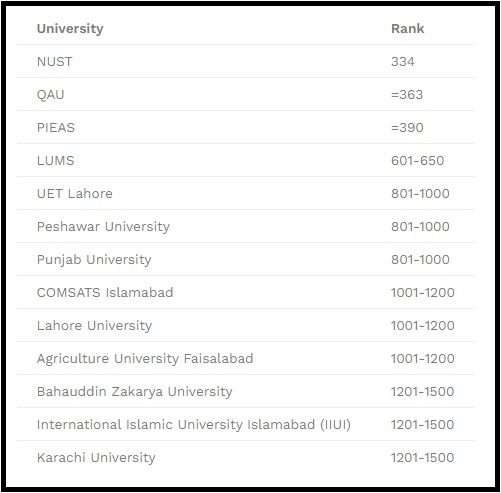This year’s QS World University Rankings include almost 1,500 institutions from around the world. It’s not just iconic institutions that take the top spots. This year’s highest rankings include universities from diverse locations across Europe, Asia and North America.
Meanwhile, about 13 Pakistani universities have been highlighted in the best global universities for 2022 published by US News and World Report, a Washington-based ranking guide.
Among these 13 universities National University of Sciences And Technology (NUST) Islamabad is the top-ranked Pakistani institute out of 1,500 universities from around the world.
Pakistani Universities QS Ranking
Here is a complete list of all Pakistani Universities and their rankings in the list.

Read More: ECOM Giant Daraz Appoints Leading Agency, Mindshare, As Their Exclusive Media Agency

QS World University Rankings Top 10
Here is the list of top 10 universities in QS World University Rankings for 2023. Massachusetts Institute of Technology (MIT), University of Cambridge, and Stanford University have claimed the top 3 spots for 2023 respectively.
- Massachusetts Institute of Technology = 1
- University of Cambridge = 2
- Stanford University = 3
- University of Oxford = 4
- Harvard University = 5
- California Institute of Technology = 6
- Imperial College London = 6
- University College London = 8
- ETH Zurich = 9
- University of Chicago = 10
QS World University Rankings Criteria
The QS World University Rankings consider the following indicators while compiling these rankings each year. The indicators and the individual percentage of each indicator is listed below.
- Global research reputation = 12.5% weight
- Regional research reputation = 12.5% weight
- Publications = 10% weight
- Books = 2.5% weight
- Conferences = 2.5% weight
- Normalized citation impact = 10% weight
- Total citations = 7.5% weight
- Number of publications that are among the 10% most cited = 12.5% weight
- Percentage of total publications that are among the 10% most cited = 10% weight
- International collaboration – relative to country = 5% weight
- International collaboration = 5% weight
- Number of highly cited papers that are among the top 1% most cited in their respective field = 5% weight
- Percentage of total publications that are among the top 1% most highly cited papers = 5% weight
Read More: #LUMSFeeHike Trends As Students Face Financial Challenges
Stay tuned to Brandsynario for the latest news and updates.





































